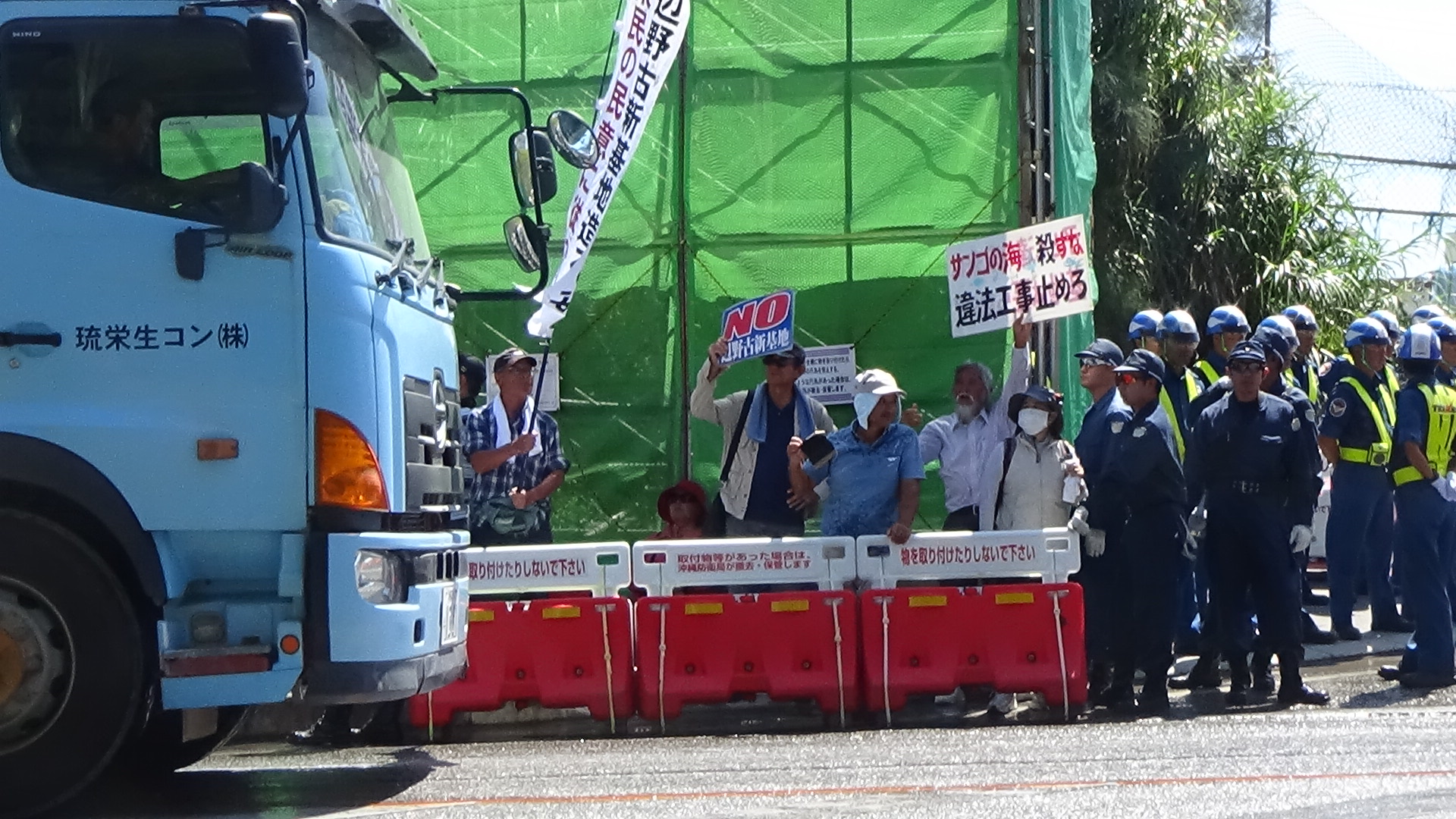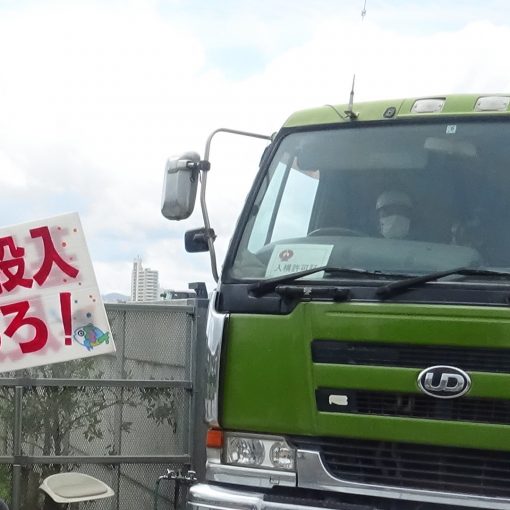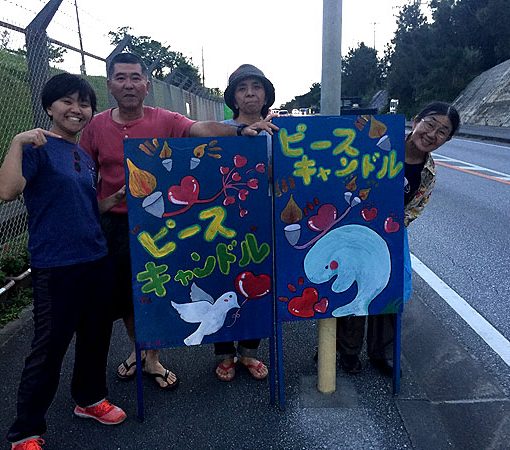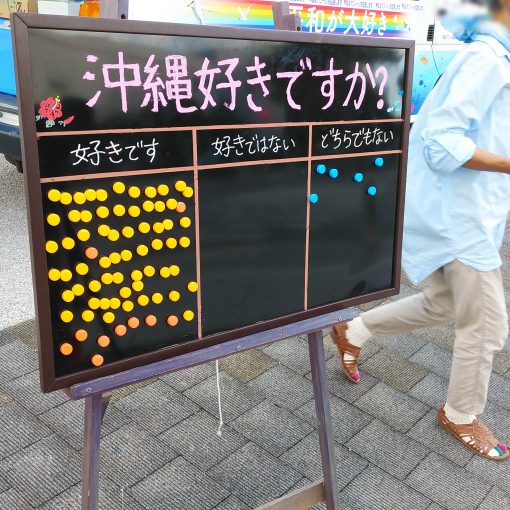(In Front of the Gate)
Many protesters started to show up at the gate in the morning, as they probably anticipated that the full-fledged reclamation work should be resumed after the typhoon had gone away. The presence of the people from other prefectures was noticable. By noon the number of participants was increased to 150. They repeated the chants to stop the illegal construction work and not to destroy the coral reefs. The number of riot police dispatched was more than usual. Three or four policemen made a team to forcibly remove sit-in demonstrators one by one. After everyone was removed, the convoy entered into the gate. People got together at the gate again to continue the protest. The total 154 dump trucks made three deliveries to the base. Almost half of the vehicles were concrete mixing trucks for manufacturing wave-dissipating blocks.



(On the Sea in Oura Bay)
A protest boat was set out for surveillance on the construction site. They found that a working boat was putting back the floats which had been taken away due to typhoon preparation. There was no pouring of earth and sand at the reclamation site today. Some ships loaded with earth and sand are anticipated to enter into the bay as early as tomorrow. The canoe team is planning to start actions to block them from early morning tomorrow.
(Rallies in Front of the Piers)
There was no delivery of earth and sand at all today.
(Other)
Seven years have passed since the MV-22 transport Ospreys were deployed at U.S. Marine Corps Air Station Futenma in 2012 despite the opposition by the Governor of Okinawa Prefecture along with the leaders of all 41 Okinawan municipalities Sufferings from residents from aircraft noise have been increased year after year. Ospreys fly at a low altitude making low frequency noise.
In the fiscal year 2017, landings and takeoffs by Ospreys totaled to 2300, while the number was increased to 2852 in fiscal 2018. In fiscal 2019, the total from April to August was 1098. Serious affects on the life of residents have been recognized. More and more people complain about headaches and ringings in their ears caused by noise. Although flight restrictions between the hours of 22:00 and 6:00 were mutually agreed upon between the Japanese and the U.S. governments, landings and takeoffs during these hours by U.S. military aircrafts counted 569 cases in fiscal 2017, 618 in fiscal 2018, and 228 between april and August in fiscal 2019, of which in nearly half cases Ospreys violated the treaty.
As municipal offices are flooded with people’s complaints, the central government of Japan, as submissive to U.S. as always, does not move to demand the U.S. Forces to follow the treaty by banning the nighttime flights. The Osprey is notorious as a defective aircrft. Accidents and incidents involving an Osprey have been repeated in Japan and across the world. In December of 2016, a U.S. military MV-22 Osprey aircraft crashed in the water along the coast of Abu district of Nago.






